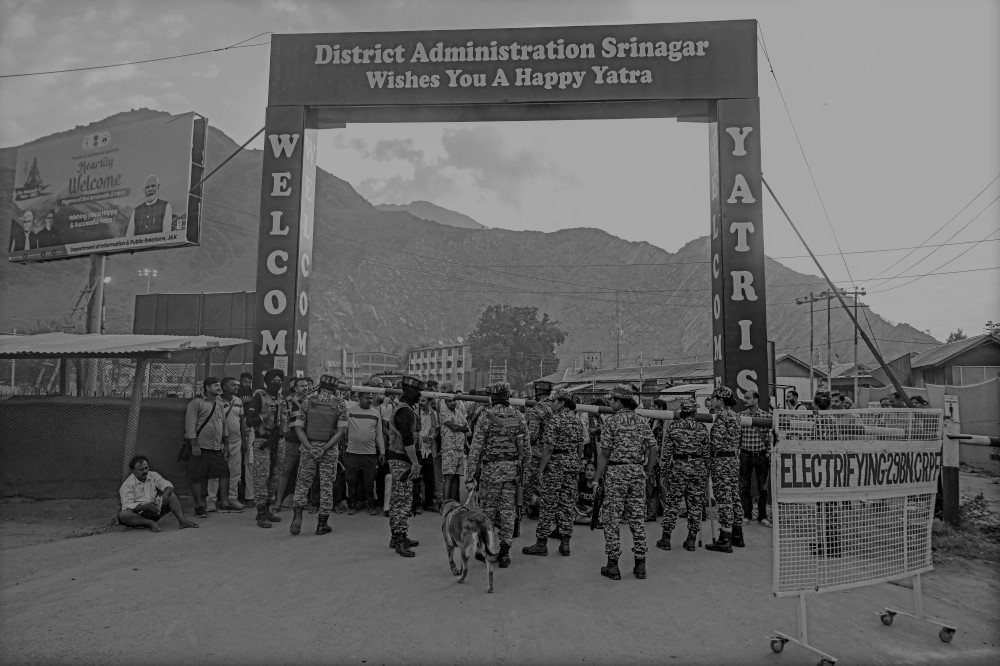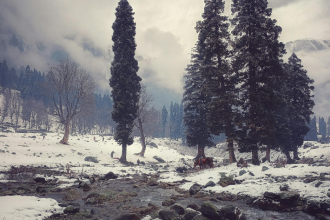Pahalgam, Kashmir – July 3 —
In the breathtaking yet tense valleys of Kashmir, thousands of Hindu devotees have once again embarked on the annual Amarnath Yatra, a month-long spiritual journey that winds through the Himalayan foothills to a revered ice shrine dedicated to Lord Shiva. This year, their steps are watched closely—not only by fellow pilgrims, but by nearly 45,000 armed personnel ensuring their safety.
The journey begins just miles from where, less than three months ago, 26 lives—mostly Hindu tourists—were lost in a brutal attack. That violence, attributed by Indian officials to Pakistan-based militants, triggered a brief but deadly military flare-up between two nuclear-armed neighbors. Tensions still simmer. But for the pilgrims, faith is louder than fear.
“There’s no fear in our hearts,” said Muneshwar Das Shashtri, who traveled from Uttar Pradesh. “Our army is with us. We walk with faith.”
Faith, however, moves under the shadow of vigilance. Soldiers in armored vehicles, snipers behind sandbags, and surveillance cameras—including facial recognition tools—watch over the devotees. The base camp at Pahalgam, once a peaceful tented village, now resembles a fortified zone wrapped in razor wire.
Each pilgrim is tagged with an electronic radio card to track their movement. They are transported in guarded convoys until they begin their steep trek—30 kilometers uphill—to the cave at 3,900 meters, where a natural ice formation believed to be a manifestation of Lord Shiva awaits.
Yet, amid this orchestrated security, the human spirit shines through. First-timer Ujwal Yadav, 29, stood undeterred. “I came to see Baba,” he said. “Whatever happened, we are not afraid. We came for peace and blessings.”
While the region remains fragile, signs of resilience are visible. “Public confidence is returning,” said Manoj Sinha, the Indian-appointed administrator of Jammu and Kashmir, though he acknowledged that registration is down 10 percent compared to last year’s half-million turnout.
The pilgrimage, once a modest local affair, has grown substantially since 1989, when insurgency gripped Kashmir. Over time, it has become not just a religious event but also a symbol—one deeply intertwined with politics, nationalism, and identity.
Although militant groups claim they do not target the pilgrimage, citing religious neutrality, there’s a clear warning: any attempt to politicize or assert religious dominance could make it a target. In 2017, a deadly bus attack took 11 pilgrim lives. And this April’s attack is a haunting reminder that peace remains precarious.
Authorities recently arrested two locals in Pahalgam accused of supporting the April 22 attackers. Still, several suspects—allegedly including Pakistani nationals—remain at large.
For now, pilgrims march forward, some with chants, some in silence, all under watchful eyes. They are bound by devotion, not detoured by danger.
This is Kashmir—a place of unmatched beauty and unresolved conflict, where every step to the shrine is a prayer not only for salvation, but also for peace.








